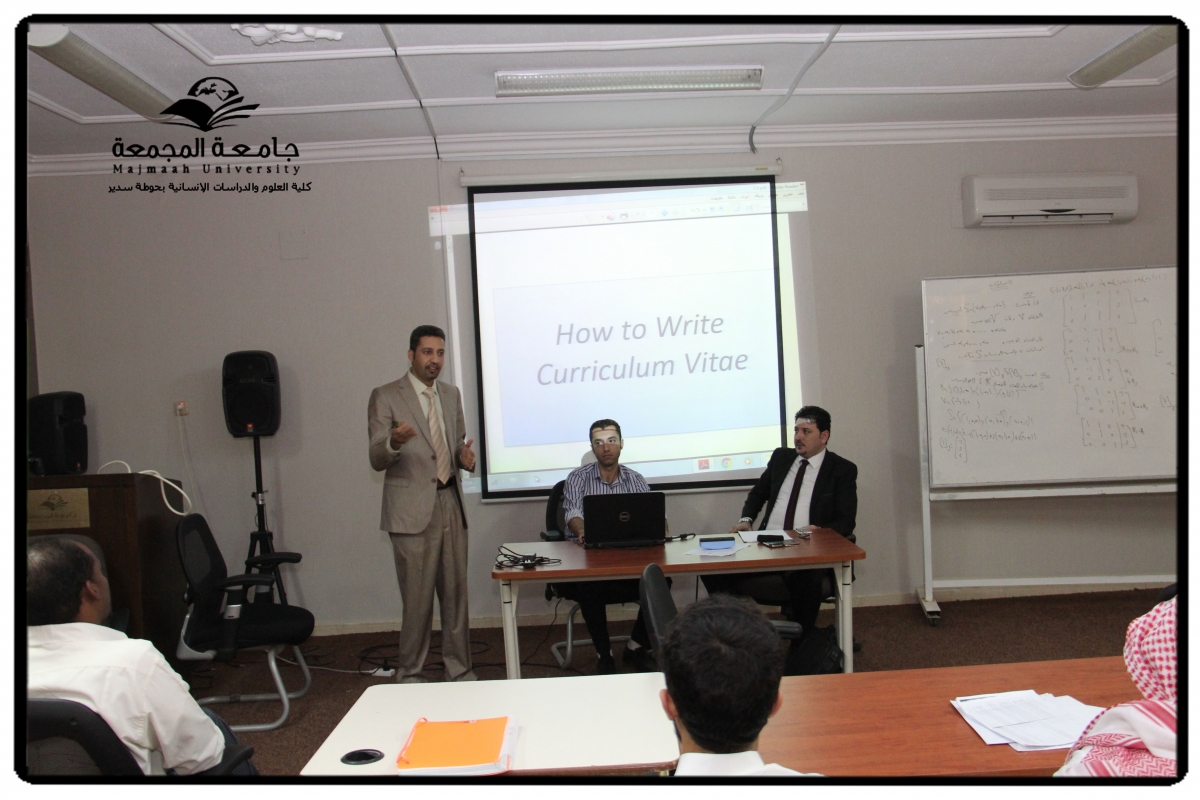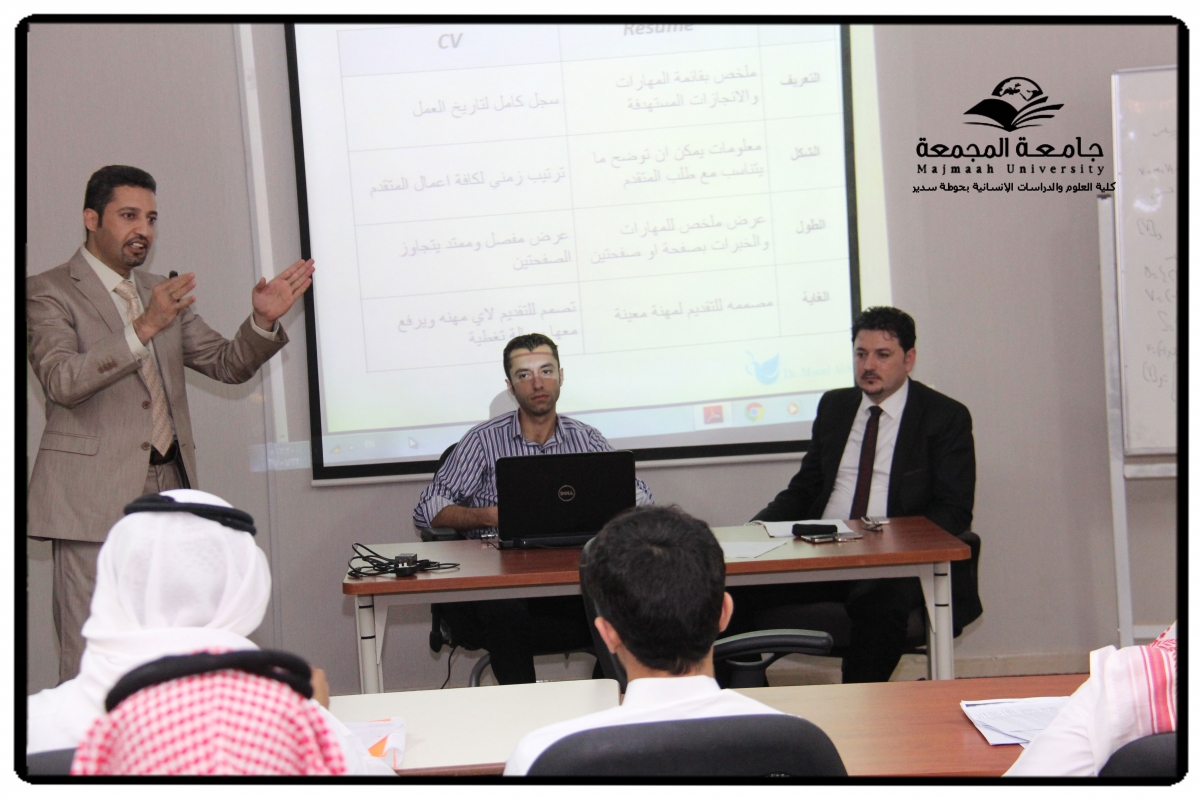
The English Language Department held on Wednesday, 22/1/1437 AH corresponding to 04/11/2015 AD a training session on (CV preparation), in the Presence Hall. The session was presented by the head of the department, Dr. Murad Shboul, Mr. Ahmed Al Noafleh, and Mr. Salim Abdul Hadi, who provided a detailed explanation on the basic concepts related to CV preparation and its specifications, which were summarized in the following: 1. CVs must have a strong and positive impact. 2. The information contained in the CV must be accurate and true. 3. Ideas must be organized and arranged. 4. CV must have topics. 5. Chronological coordination. 6. All information must be absolutely clear, and doesn't leave room for readers imagination, it shouldn't be assumed that the reader knows what it seems to be self-evident, such as: the abbreviation CS, which means (Computer Sciences). 7. Avoid spelling and grammatical mistakes, because language proficiency reflects the writer's intellect. 8. E-mail and cell number must be included. 9. CVs should be written in points with the use of bullets, which facilitates the reading and comprehension process because employers do not like reading CVs written in the form of paragraphs. 10. Summarize your credentials in a brief manner, because many employers will not consider any CV that contain more than one page, and remember that hiring managers and employers receive hundreds even thousands of applications. 11. Use good white paper, size A4 and avoid colored paper. In addition to this, a CV should be divided into the following entries: First: personal information, which include the name, date of birth, nationality, marital status, address, phone numbers, e-mail, personal web page address. Second: academic qualifications, which include history of qualification, average (GPA) if it's High, name and place of the educational institution. Third: employment and job experience, which includes occupation, employment period, work duties and responsibilities. This field also includes all jobs that require full or partial time as well as practical and summer training. Fourth: training courses, which include the name of the course, period, place and the responsible institution. Fifth: activities, which include the name of the activity, period, place and the responsible party as well as skills and hobbies. At the end of the session some questions and beneficial discussions were raised by the audience.






